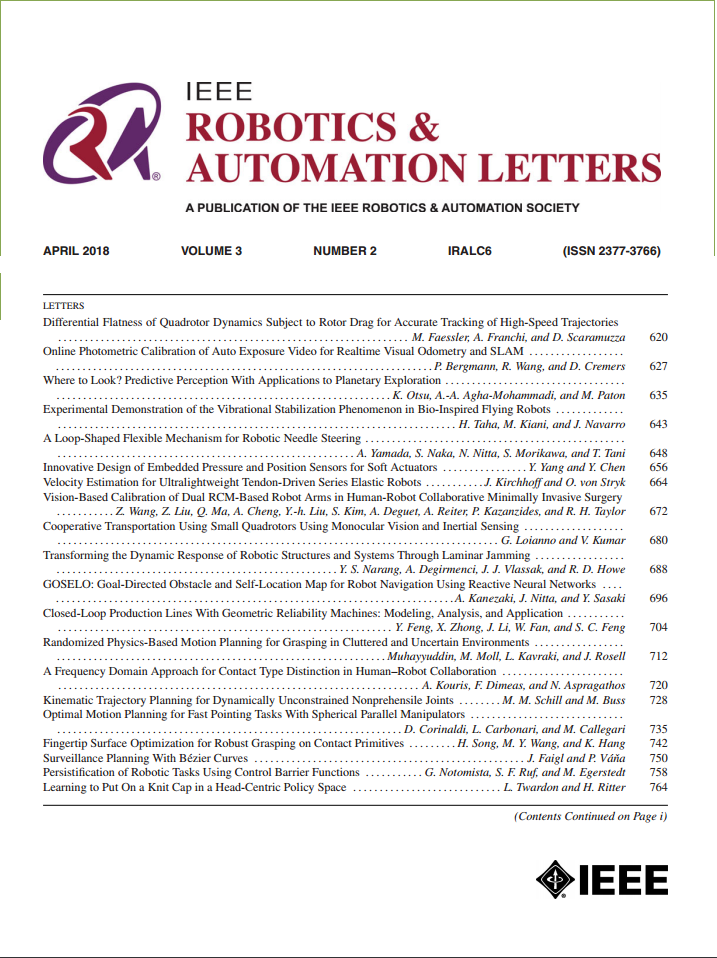RecGS: Removing Water Caustic With Recurrent Gaussian Splatting
IF 5.3
2区 计算机科学
Q2 ROBOTICS
引用次数: 0
Abstract
Water caustics are commonly observed in seafloor imaging data from shallow-water areas. Traditional methods that remove caustic patterns from images often rely on 2D filtering or pre-training on an annotated dataset, hindering the performance when generalizing to real-world seafloor data with 3D structures. In this letter, we present a novel methodRecGS:用循环高斯溅射去除苛性水
水焦散在浅水区海底成像数据中很常见。从图像中去除苛性模式的传统方法通常依赖于2D滤波或对带注释的数据集进行预训练,这阻碍了将其推广到具有3D结构的真实海底数据时的性能。在这篇文章中,我们提出了一种新的方法,即循环高斯溅射(RecGS),它利用了当今逼真的3D重建技术,3D高斯溅射(3DGS),从海底图像中分离焦散。利用水下机器人拍摄的一系列图像,循环构建3DGS,并在每次迭代中对焦散进行低通滤波分解。在实验中,我们分析和比较了不同的方法,包括联合优化、二维滤波和深度学习方法。结果表明,我们提出的RecGS模式可以有效地将腐蚀性从海底分离出来,改善视觉外观,并且可以潜在地应用于更多光照不一致的问题。
本文章由计算机程序翻译,如有差异,请以英文原文为准。
求助全文
约1分钟内获得全文
求助全文
来源期刊

IEEE Robotics and Automation Letters
Computer Science-Computer Science Applications
CiteScore
9.60
自引率
15.40%
发文量
1428
期刊介绍:
The scope of this journal is to publish peer-reviewed articles that provide a timely and concise account of innovative research ideas and application results, reporting significant theoretical findings and application case studies in areas of robotics and automation.
 求助内容:
求助内容: 应助结果提醒方式:
应助结果提醒方式:


